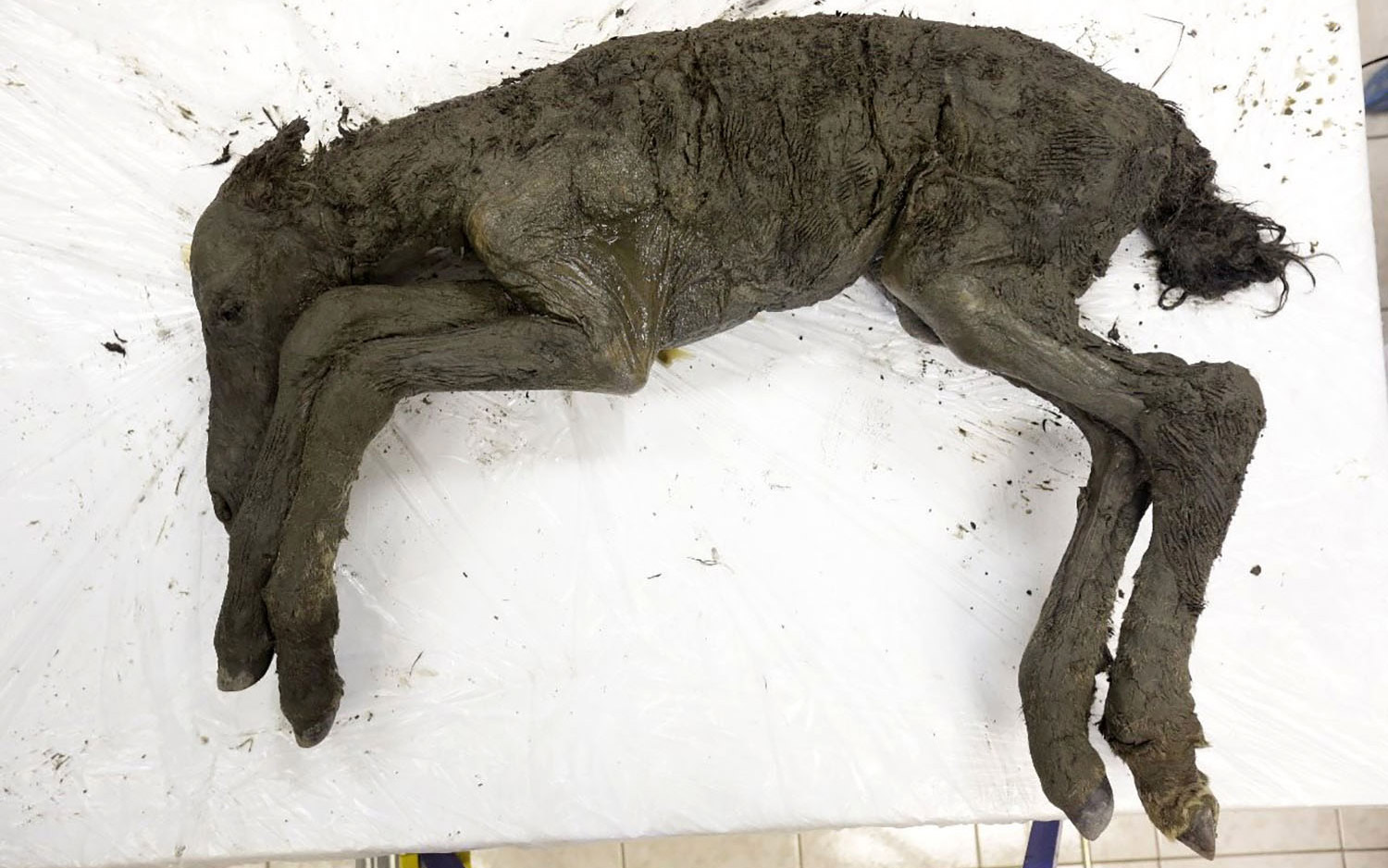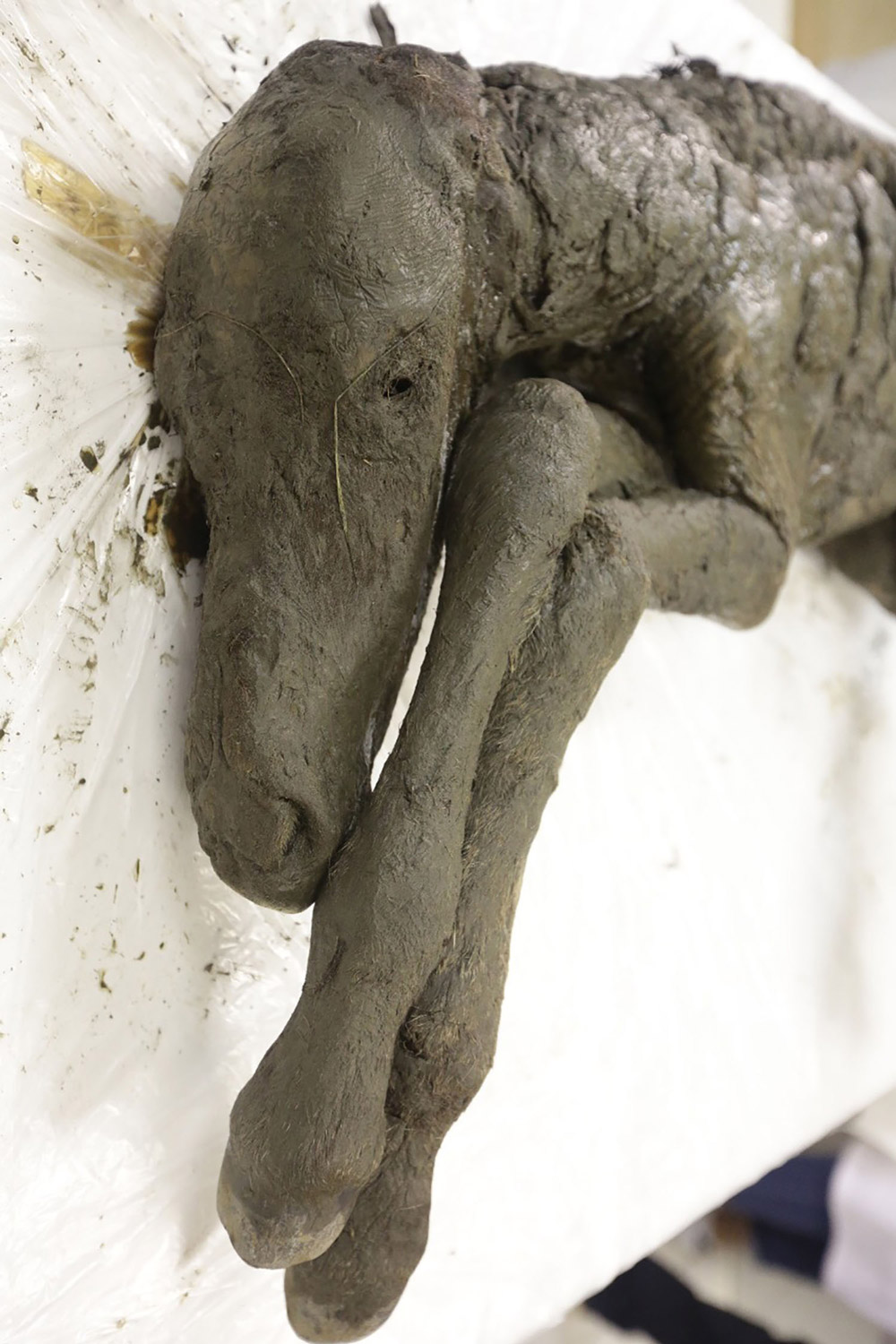Siberian Permafrost Reveals Perfectly Preserved Ice-Age Baby Horse

The astonishingly intact body of a young foal that died between 30,000 and 40,000 years ago was recently unearthed from melting permafrost in Siberia. Its mummified remains were so well-preserved by icy conditions that the skin, the hooves, the tail, and even the tiny hairs in the animal's nostrils and around its hooves are still visible.
Paleontologists found the mummified body of the young horse inside the 328-foot-deep (100 meters) Batagaika crater during an expedition to Yakutia in eastern Siberia. The researchers announced the mummy's discovery on Aug. 11, The Siberian Times reported.
The foal was likely about two months old when it died and may have drowned after falling into "some kind of natural trap," Grigory Savvinov, deputy head of the North-Eastern Federal University in Yakutsk, Russia, told The Siberian Times. [See Photos of the Perfectly Preserved Ice-Age Foal]
Remarkably, the body is whole and undamaged and measures about 39 inches (98 centimeters) tall at the shoulder, according to The Siberian Times. Scientists collected samples of the foal's hair and tissue for testing, and the researchers will investigate the animal's bowel contents to determine the young horse's diet, Semyon Grigoryev, director of the Mammoth Museum in Yakutsk, Russia, told The Siberian Times.
Wild horses still populate Yakutia today, but the foal belonged to an extinct species that lived in the region 30,000 to 40,000 years ago, Grigoryev told The Siberian Times. Known as the Lena horse (Equus caballus lenensis), that ancient species was genetically distinct from modern horses in the region, Grigoryev said.

Siberian permafrost is known for preserving ancient animals for tens of thousands of years, and many superb specimens have emerged as global temperatures continue to rise and permafrost melts. Recent discoveries include a 9,000-year-old bison; a 10,000-year-old woolly rhino baby; a mummified ice age kitten that could be a cave lion or lynx; and a baby mammoth nicknamed Lyuba who died after choking on mud 40,000 years ago.
Amazingly, one type of animal preserved in Siberian permafrost for tens of thousands of years was recently brought back to life. Tiny nematodes — a type of microscopic worm — that had been frozen in ice since the Pleistocene were defrosted and revived by researchers; they were documented moving and eating for the first time in 42,000 years, Live Science previously reported.
Sign up for the Live Science daily newsletter now
Get the world’s most fascinating discoveries delivered straight to your inbox.
But sometimes thawing permafrost reveals surprises that are decidedly unpleasant. In 2016, anthrax spores that had been frozen in Siberia for 75 years revived during a stretch of unusually warm weather; the subsequent "zombie" anthrax outbreak killed more than 2,000 reindeer and sickened over a dozen people.
Original article on Live Science.

Mindy Weisberger is an editor at Scholastic and a former Live Science channel editor and senior writer. She has reported on general science, covering climate change, paleontology, biology and space. Mindy studied film at Columbia University; prior to Live Science she produced, wrote and directed media for the American Museum of Natural History in New York City. Her videos about dinosaurs, astrophysics, biodiversity and evolution appear in museums and science centers worldwide, earning awards such as the CINE Golden Eagle and the Communicator Award of Excellence. Her writing has also appeared in Scientific American, The Washington Post and How It Works Magazine. Her book "Rise of the Zombie Bugs: The Surprising Science of Parasitic Mind Control" will be published in spring 2025 by Johns Hopkins University Press.










